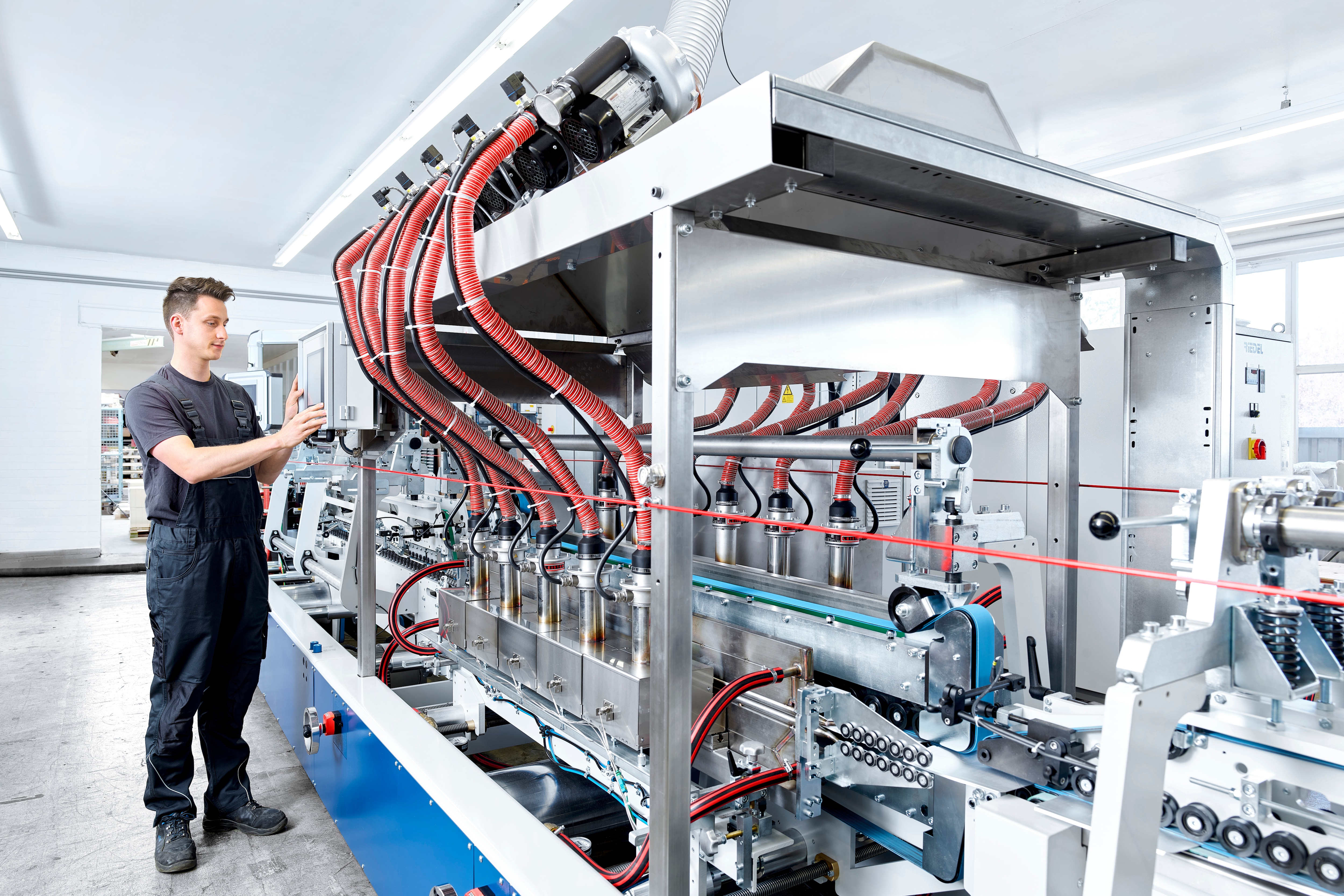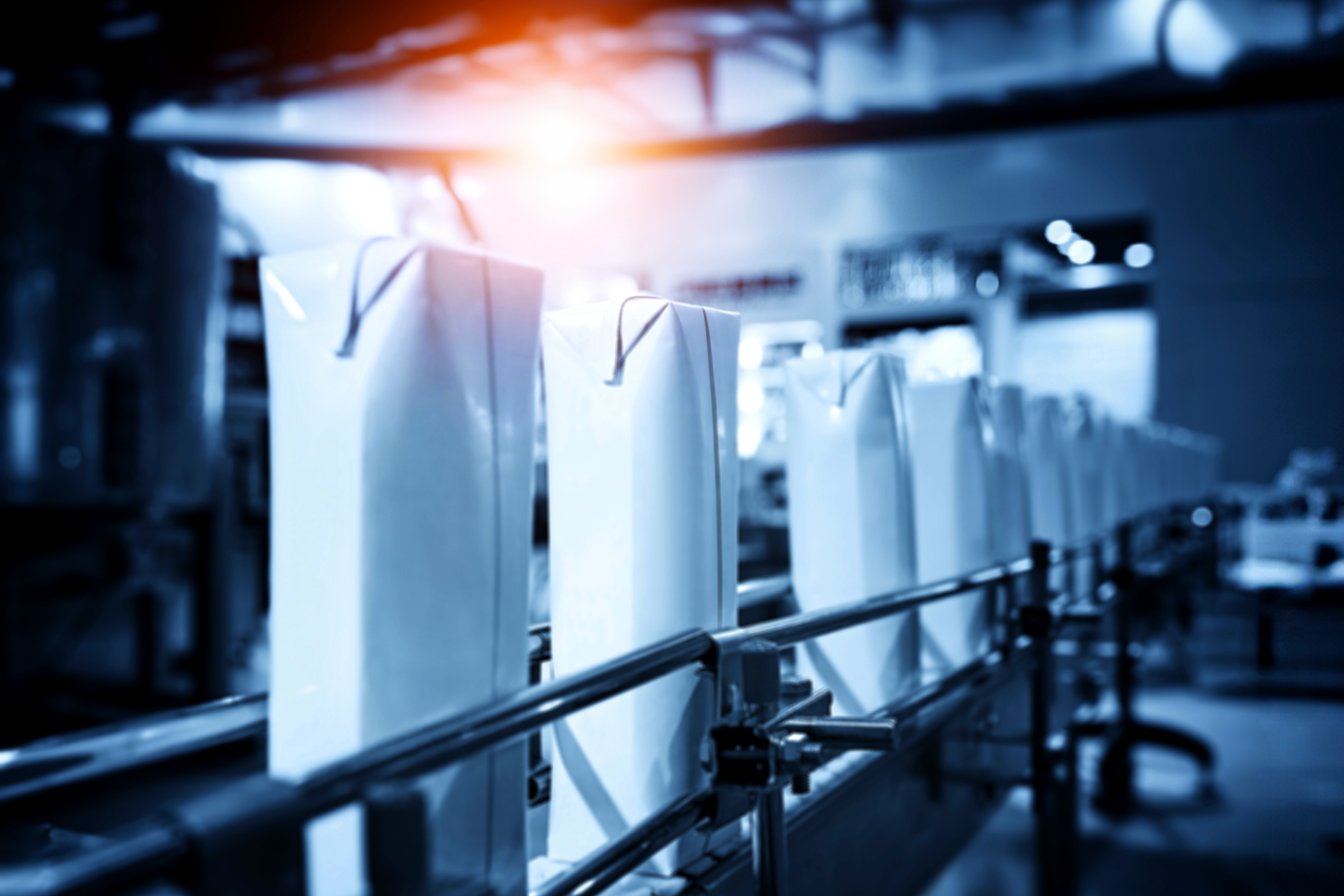Hot Air Sealing is an important technique in the food packaging and packaging industry, especially in companies like Starlinger, Combiloc, and Tetra Pak. These companies use this technology to create strong, hermetic seals that protect products from external factors such as moisture, bacteria, and mechanical damage. Here is how Hot Air Sealing is applied in each company:

1. Starlinger - Hot Air Welding Technology in Packaging Production
Starlinger is one of the leading manufacturers in the woven packaging industry and industrial packaging such as sacks, woven bags FIBC (Flexible Intermediate Bulk Containers). Starlinger's Hot Air welding technology is mainly used in woven plastic packaging production lines to create hermetic seals for products containing materials, chemicals, foods, etc.
- Operating principle: The hot air stream is precisely controlled in temperature to soften the plastic layer (polyethylene or polypropylene) and create a tight seal between the material layers without the need for additional adhesives or glue.
- Applications: FIBC packaging, big bags, strong and sealed packaging for storing bulk materials or liquids.
Advantages:
- Energy saving thanks to the direct heating process.
- Ensures strong, high load-bearing and leak-proof welds.
- Increases production efficiency, helping to reduce time and costs.
- Reduces environmental impact as there is no need to use glue or chemicals.
2. Combiloc - Hot Air Sealing Technology in Food Packaging
Combiloc is a company specializing in providing food packaging solutions, especially packaging for frozen foods, processed foods and other consumer products. Combiloc's Hot Air Sealing technology focuses on creating a tight seal on packaging to protect food quality.
- How it works: Like other Hot Air sealing systems, Combiloc uses hot air to soften the plastic and seal the seams without deforming the packaging.
- Applications: Frozen food packaging, high temperature resistant packaging bags, vacuum packaging, and products that require a hermetic seal for long-term food preservation.
Advantages:
- Air and moisture resistance: Hot Air welding ensures that the packaging has the ability to preserve food for a long time by preventing the penetration of air, water vapor, and bacteria.
- Increased aesthetics and durability: Precise and aesthetic welds, no traces of glue or adhesives.
- High production efficiency: Reduces time and cost of food packaging production.
3. Tetra Pak - Hot Air Welding Technology in Food and Beverage Packaging
Tetra Pak is one of the world's leading companies in the field of packaging and food processing, especially prominent in the production of paper boxes and plastic bottles for beverage products, milk, juice, etc. Hot Air welding technology in Tetra Pak is mainly used to create a sealed seal for paper packaging, ensuring hygiene and long-term preservation of food and beverages.
- Working principle: Hot air is used to soften the layers of paper and plastic materials, helping to bond these layers together, forming a perfect sealed package without losing the aesthetics of the product.
- Application: Tetra Pak paper box packaging for beverages, milk, juice, processed foods, and other consumer products.
Advantages:
- Anti-leakage and food preservation: Hot Air welding helps create a sealed package, protecting food from the penetration of air, bacteria and external agents, prolonging the shelf life.
- Energy saving: The hot air welding system helps save energy and reduce production costs.
- Environmentally friendly products: Tetra Pak packaging solutions can be recycled and reused, and this sealing technology reduces the use of chemicals or adhesives.
Company Comparison
So sánh giữa các công ty
| Công ty |
Main Applications |
Hot Air technology advantages |
| Starlinger |
Industrial packaging (sacks, FIBCs) |
Energy saving, strong welds, high load capacity and leak-proof |
| Combiloc |
Food packaging (frozen foods) |
Air and moisture barrier, long-term food preservation, aesthetic welds and high production efficiency |
| Tetra Pak |
Food and beverage packaging (paper boxes, bottles) |
Good food preservation, energy saving, environmentally friendly products |

In summary:
Leister Hot Air welding technology brings many benefits to the packaging production of Starlinger, Combiloc, and Tetra Pak. Although there are different applications (industrial packaging, food packaging), this technology helps to improve product quality, increase production efficiency and save costs, while meeting the requirements of food preservation and safety.












